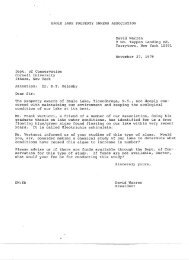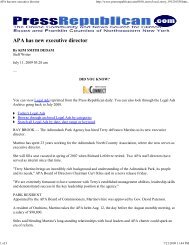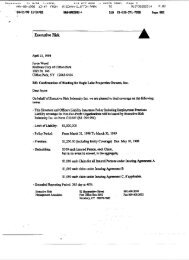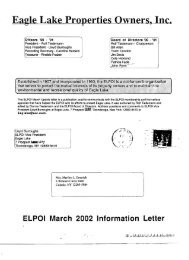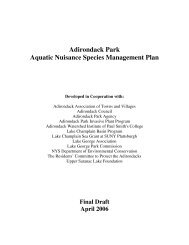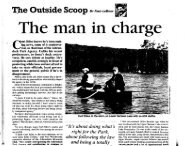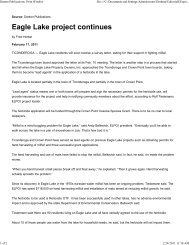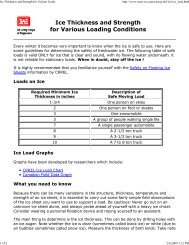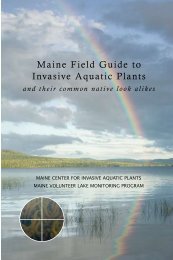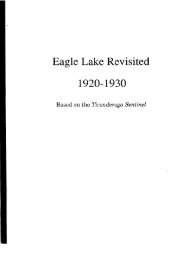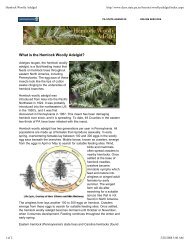SEIS - Eagle Lake Property Owner's Inc.
SEIS - Eagle Lake Property Owner's Inc.
SEIS - Eagle Lake Property Owner's Inc.
You also want an ePaper? Increase the reach of your titles
YUMPU automatically turns print PDFs into web optimized ePapers that Google loves.
TABLE 3. MANAGEMENT OPTIONS FOR CONTROL OF ROOTED AQUATIC PLANTSOPTION MODE OF ACTION ADVANTAGES DISADV ANT AGESI.c) Sediments of a desirable• Sediments may be added on composition top of existing sediments or • Plant biomass can be buried •• Use of sand or clay can limit • Sediment can be made less •sediment-water interactions.• Nutrient release from ••from the surface or suction• Surface sediment can be made •<strong>Lake</strong> depth may declineSediments may sink into or mixplants. deeper with underlying muckPermitting for added sedimentplant growths and alter hospitable to plant growths may be difficultAddition of sediment may cause'Sediments can be applied sediments may be reduced initial turbidity increaseNew sediment may containdredged from below muck more appealing to human nutrients or other contaminantslayer (reverse layering users•Generally too expensive fortechnique)•Reverse layering requires no large scale applicationaddition or removal ofsedimentTemporarily removes benthicremoved by wet or dry flexibility invertebratesMay create turbidityMay eliminate fish communityCan reduce sediment oxygen (complete dry dredging only)Possible impacts fromlimited basis, but is most Can improve spawning habitat containment area discharge•often a major restructuring of for many fish species•Possible impacts from dredgeda severely impacted system•Allows complete renovation of material disposalInterference with recreation orremoved and re-growth canother uses during dredgingbe limited by light and/or•Usually very expensivesubstrate limitationEliminates most aquatic biotamaximum extent practical thorough effort unless a portion left undrainedEliminates lake use duringmaximum extent possible sediments prior to removal dredgingConventional excavation•Allows use of less specializedequipment used to remove equipmentsediments2) Dredging • Sediment is physically • Plant removal with some •excavation, with deposition <strong>Inc</strong>reases water depth in a containment area for Can reduce pollutant reserves •dewatering/disposal•• Dredging can be applied on a demand •• Plants and seed beds are aquatic ecosystem •2.a) "Dry" excavation• <strong>Lake</strong> drained or lowered to • Tends to facilitate a very •• Target material dried to • May allow drying of ••D<strong>SEIS</strong> for <strong>Eagle</strong> <strong>Lake</strong> 22 ENSR



